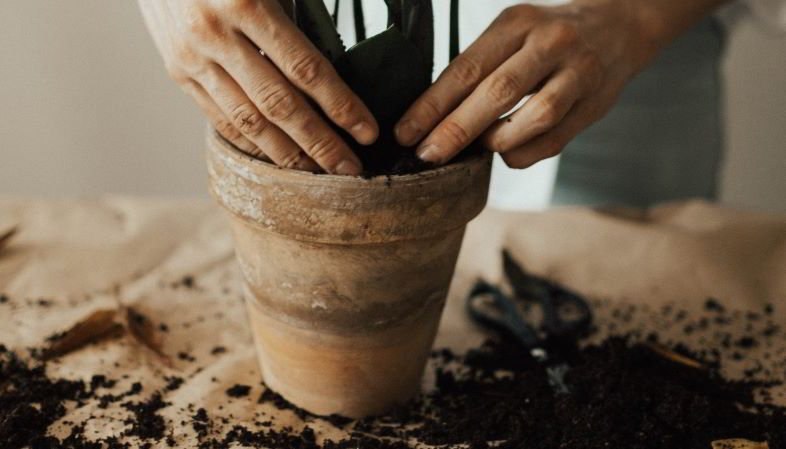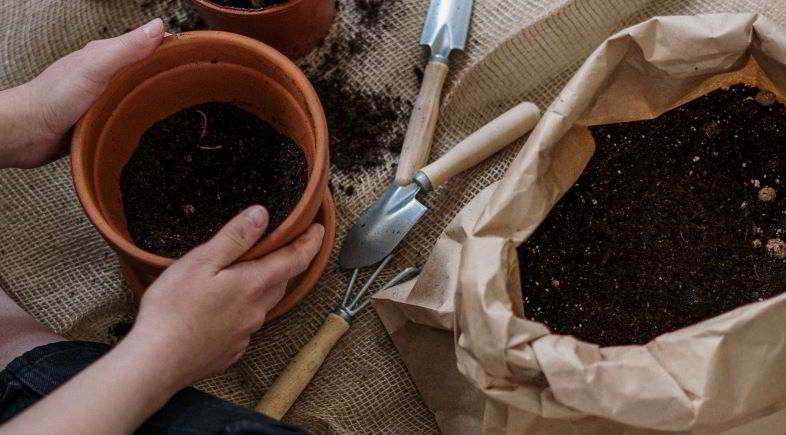Published on: 14/07/2021
Here’s how, why and when to repot cannabis plants without mistakes, for a quality harvest.
From the moment the marijuana seeds are planted, to the appearance of the first leaves, to the period of maximum growth, the cannabis plant goes through several stages and needs different care.
One of these is the repotting process.
How do I repot a marijuana plant correctly?
Why is it important to do this?
What is the right timing?
Here you can find all the information you need to know about potting up dwarf auto flower seeds, fast flowering, feminized plants and any other variety.
Why is it important to repot cannabis plants?
When talking about cannabis cultivation, if you have heard that it is important to repot cannabis plants as they grow, then you will probably also want to know why this is important.


Why is it essential to repot hemp plants periodically?
Obviously, because depending on its growth stage, each plant will have very different nutritional needs.
After planting cannabis seeds, the smaller seedlings will certainly have different needs than tall plants with large leaves.
More specifically, as marijuana plants grow, their roots will expand into the substrate in search of nutrients, taking up all the space available.
The bigger the plant, the more space the roots will need, until the phenomenon of root entanglement is created.
Basically, when the roots need to expand but have no more space, they generate circles around the surface of the pot, the plant suffers and growth slows down.
By repotting plants before this phenomenon occurs, the roots of the plant can expand in a natural way, allowing the plant to thrive.
Now let’s see how to repot a marijuana plant in the right way to promote proper development without doing any damage.
Read also: Herbicide: effects on human health and cannabis plants
How to repot a cannabis plant: step by step procedure.
Transferring a cannabis plant in the right way is very important to prevent it from becoming over-stressed. The key words in this process are patience, gentleness and cleanliness.
This may seem like a trivial task but knowing exactly how to take a plant out of its pot can prevent it from becoming over-stressed or even damage its roots (its essential components).
Naturally, the better the quality of the plant, the more resistant it will be, which is why it is advisable to choose only quality quick seeds, feminized seeds or auto-flowering seeds such as BSF seeds.
First and foremost, those who are going to be transplanting hemp plants should ensure that they have plenty of time to do so; this is not something to be done hastily and carelessly.
In addition to this, it is essential to have the right-sized pots and a good quality substrate suitable for growing hemp; make sure the work area, tools and your hands are perfectly clean (pots included) and only proceed if the sun is not very strong (exposing the roots to too much light can be dangerous), preferably late in the evening or even at night.
If the hemp grower is able to comply with all of the above, he can proceed with repotting.
Let’s take a step-by-step look at how to avoid repotting shock.
- Preparing the new pot
First of all, prepare the new pot for the plants by filling it with a good quality substrate to just over half full, without pressing it down. Then, wet it and create a hole in the center to accommodate the seedling. - Pulling the plant out of the old pot
Now is the time to gently pull the plant out of the pot, trying to get all the clod of soil surrounding the roots out as well. If this resist, it is important not to make any sudden moves, damaging the roots is the last thing that will do the hemp plant any good, but you can try to apply pressure to the sides of the pot, or change position. If the plant really doesn’t want to come out, use a small knife to pull the soil out of the pot (but as a last resort). - Place the seeding in the new container
Now, holding a hand under the roots of the plant, you can insert it into the gap created in the substrate of the new pot, and add more soil to fill in the gaps and to stabilese the plant in its new habitat. - Watering and root nutrition
At this point repotting is complete, but to further stabilize the plant in its new pot it is best to water it a little, preferably using a root stimulator as well, which is ideal for limiting transplant shock.
If you are wondering how long transplant shock lasts for hemp plants, the answer is that it depends on the plant, but during the first few days after changing pots you may notice a slowdown in growth and for at least two weeks it is best not to give it any further treatment.
The procedure you have just read is useful both for repotting newly purchased plants and also if you were wondering how to repot older plants. In both cases, it is essential to take care not to yank the plant and to preserve all of its components.


When to repot marijuana plants? Here’s how to recognize the right times and how often to do it.
Having clarified how to repot a maria plant (another name for the cannabis plant) you will probably also want to know when to do this and how frequently.
The first thing that is important to know is that it is not advisable to repot plants too frequently, because – as mentioned earlier – even if this procedure is necessary, it can stress the plants.
In general, repotting is carried out a maximum of 2-3 times, depending on the photoperiod.
If you have recently planted BSF seeds of cannabis and have very small hemp seedlings in front of you, you should ensure that they have developed at least 3 internodes (they must have at least 4 or 5 effective leaves) before repotting.
A second potting can be carried out when the plants grow to double the size of the first potting.
However, the plant sends out other signals as to when it is time to repot:
- The soil dries out too quickly.
If the substrate dries out too quickly after watering the plants, it is clear that they need a larger pot that offers more nutrients and moisture. - Accelerated growth
If the plant is growing rapidly, it is important to transfer the plant before the roots become tangled and before the future quality of the plant become compromised. - Too slow growth
Even if the plant has stopped growing, it is a good idea to replace the pot with a larger one: a new substrate and the possibility of absorbing more nutrients thanks to the expansion of the roots will promote growth.
Read also: Legal marijuana : 3 reasons to buy your collectable seeds at SensorySeeds
To conclude.
As you can see, transplanting is as delicate as it is important. Just as it is important to choose the right seeds, the ideal soil and the right nutrition.
We hope that this has clarified matters for you, but we would like to remind you that growing cannabis is not allowed in France, and if you like to collect the best seeds of this particular plant, we invite you to take a look at our Sensory Seeds store.
Choose your favorite products and if you are looking for more interesting facts about the world of hemp, keep following us.
We look forward to seeing you on Sensoryseeds!









